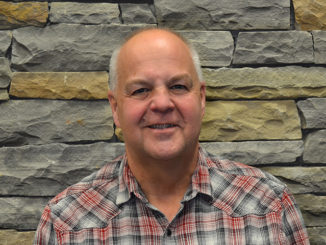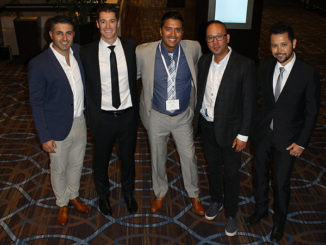
In a growing, connected world it is people who need to stand out to make their companies more successful.
By / Jessica Kirby
LinkedIn continues to stand out as the most recognizable, most known social media platform for business. News, media, video, and connection-building content posted to LinkedIn meets a targeted audience—people interested in business and in learning more about their own industries and others that relate.
As of 2017, LinkedIn had more than 500 million users, and more than half of those are active on a monthly basis. Of those 40% log in weekly. Here is where it gets interesting: 61 million LinkedIn users are senior level influencers and 40 million are in decision-making positions. That said, 87 million millennials are using LinkedIn and they are the innovators of today and the decision-makers of tomorrow. These numbers means two things: social media is not just for the young and frivolous and if you aren’t using it, you are missing out.
But the purpose and functionality of LinkedIn has changed. It started as headhunter site where jobseekers would post resumes to find work when they were unemployed or to keep an eye on the market when they were employed, in case something better came up. It was a place for online networking, article sharing, and media exchange where the company and corporate brand were the focus. Deals were made and broken by how great a company looked on LinkedIn.
Not anymore. Although still a business and networking focus, people are now looking at the people of LinkedIn, rather than at the brand. They aren’t looking at a company’s track record, but at a specific employee’s interests, inspiration, and experience. Recruiters are looking for a specific type of person, searching those terms, and choosing the company because of its affiliation with the person. Times they are ‛a changin’.
And, it makes sense. Every North American marketing trend indicates a return to boutique, customized products and services with a personal element. In a world of information overload it becomes impossible to sort through the flashy logos and “industry-leading” mottos. Every company claims to be the best and represent the most advanced in what they do. Every company has a unique offering, a team of global leaders, and a decades of expertise to offer. But if everyone is the best, how does one choose?
By choosing the people they want, says Shaun Ekert, TIAC president, who attended a workshop on LinkedIn’s evolving focus. “The change in how the information is presented changes the way we think,” he says. “People want to do business with Bob Smith and see he works for ABC Insulation, so they hire ABC for the opportunity to work with Bob. They become connected to a company because of the company’s connection to its people.”
This means a fundamental shift in how businesses and their people need to present themselves using LinkedIn. Where Bob Smith used to have his photo and job title listed—Bob Smith, Project Manager—he now needs to get personal to be innovative. Bob Smith, Innovating the Customer Service Experience provides a glimpse into Bob’s job description and personality while providing some key search terms.
“If someone enters ‛insulation + innovating’ as search terms, it will lead them to Bob Smith,” Ekert says. “It is important to create a personal mission or brand that connects the best people to the company—that way once the seeker reaches out to Bob Smith, he knows something about him. They are past the cold-calling stage.”
Finding the correct balance of personal information on the business page means those seeking can get some insight, explore that person’s personality and interests, and bypass the two or three meetings is takes to create that connection.
According to sales management company Salesforce, LinkedIn is more than a place to go when you are looking for a new job. It encourages people to sell themselves to customers rather than selling qualifications and experiences to an employer.
“Forgo the traditional (‘I increased our company’s revenue by 200 per cent’) and instead communicate what you’ve done,” says the company’s blog. “That may be something like this: ‘I helped hundreds of businesses by introducing them to our enterprise sales automation software.’ You want to focus on selling your current business, products, and services, so pay the most attention to your current job experience and summary sections. This will show potential customers your devotion to helping people like them throughout your career.”
Remember, too, that LinkedIn is a two-way street. Companies need the right employees, so telling them what employees bring to the table helps weed through the connections that aren’t quite a good fit.
According to Salesforce, because most interactions on LinkedIn will lead back to a person’s professional profile, it’s important to sell one’s self, experience, and expertise, starting with the profile’s headline.
“Ideally, your headline should also include a concise description of your ideal customer and what you have to offer. If you’re in sales, for example, lead with your official title or a generalized statement on your role, i.e. “seeking companies looking for sales, marketing, customer service, BI & data quality integration, and implementation.”
Despite its efficacy, only 40% of small to mid-sized businesses use LinkedIn. However, this is the market that can most benefit from finding long-term, dedicated employees. Keap Business Blog says small businesses need to show potential clients that there is indeed a person behind the curtain and give them reasons to consider the company an expert in the field.
“Create an inspiring headline, upload a professional photo, and demonstrate your company’s ethos with a powerful and well-worded biography,” is says. “Add any SlideShare presentations, videos, published content, and infographics that can showcase your work experience. It’s also a good idea to incorporate the keywords related to your business on both your company page and personal profile.”
Most importantly, if marketing people to create better connections to companies is going to work, it requires trust on the employer’s behalf.
“Employers need to give their employees the space and creativity to build their personal brands for the betterment of the company,” Ekert says. “That builds loyalty and good people are less likely to leave companies where they feel appreciated.” ▪



